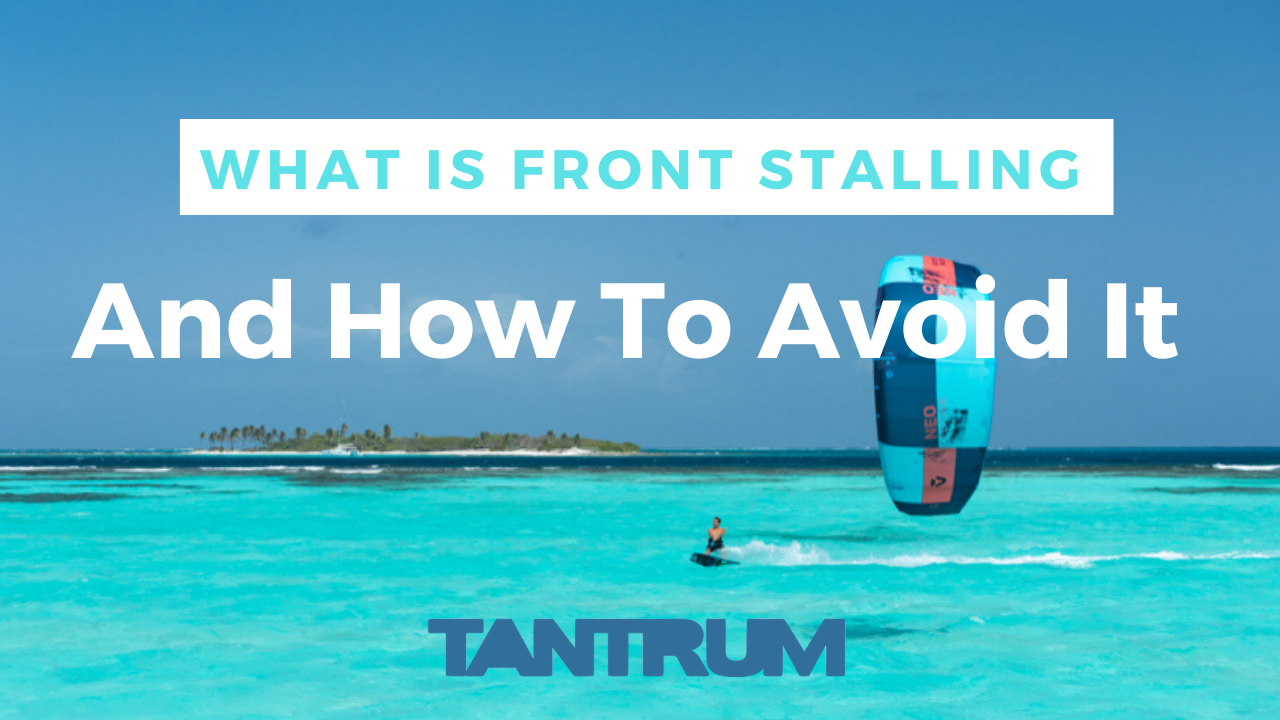
Front stalling or Hindenburging the kite is one of the worst sensations as a kitesurfer. In this video we look at what causes it and how to avoid it.
Check out the course and knock weeks off your time learning to kitesurf – Click HERE >>

Front stalling or Hindenburging the kite is one of the worst sensations as a kitesurfer. In this video we look at what causes it and how to avoid it.
Check out the course and knock weeks off your time learning to kitesurf – Click HERE >>
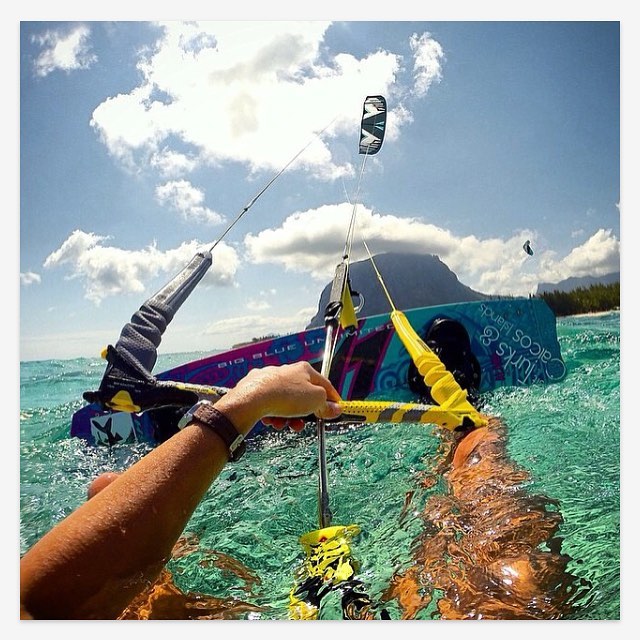
For many people water starting and riding those first few meters feels like an almost unattainable goal.
The amount of variables you are trying to put together in a split second with perfect precision makes this one of the hardest physical activities we ever learn.
Fear not in this video I break down the most common errors of waterstarting and give you a solution for each, and this isn’t the normal “Just point the board downwind” advice.
Amongst other stuff I cover:
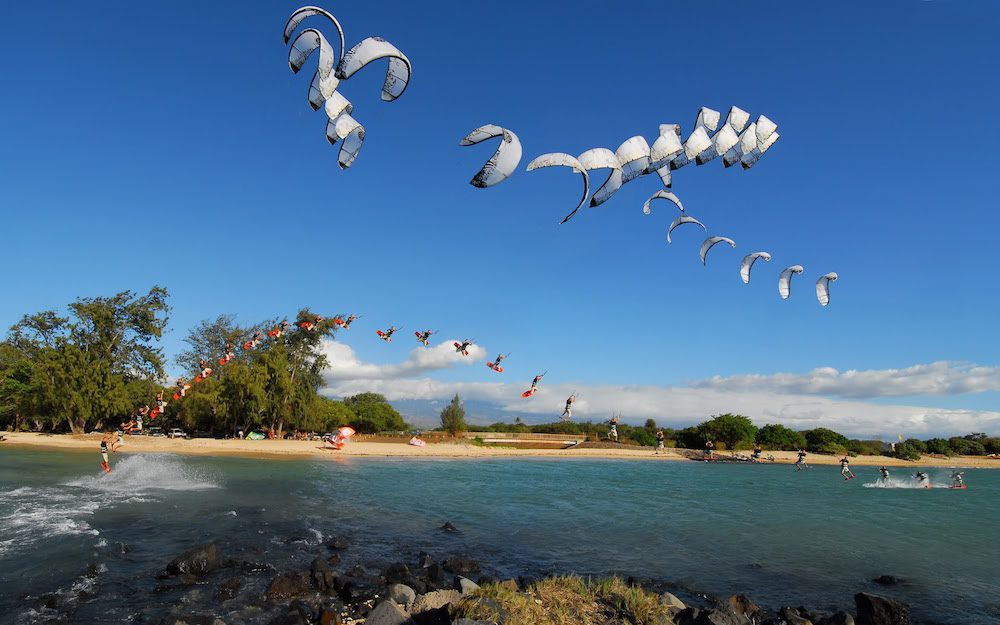
This is the best breakdown to how to boost higher that we’ve seen…nice one Lewis
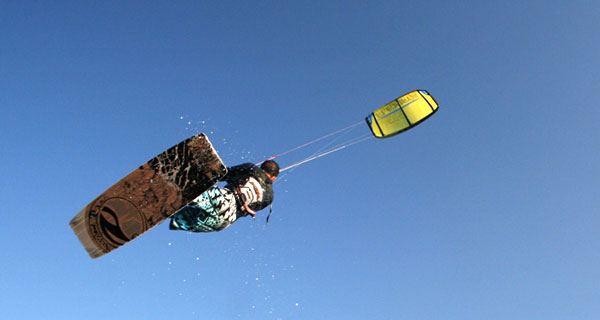
The first thing all of us want to do, once we’ve actually got riding, is strap on our jet packs and go AIRBORNE. Despite this skill being, in principle, really simple, most people struggle to really get the kind of height that leaves bystanders gaping in awe from the beachfront.
The most that many manage is a small whimper of a jump, that, despite all protestations to the contrary, rarely propel them higher than a few feet off the water, and that’s only because they really pull their knees up!
To add to the frustration, everyone you meet will tell you that learning to jump is easy, just move the kite to 12 o’clock, sheet in and hold on.
This is true.
Learning to do pathetic jumps is very easy.
Going truly airborne is a fine art of balancing power and control and as such is much harder and takes much more skill, especially when you add in some chop.
Stick with me young Padowan…all is about to be revealed.
There are a few secrets that we will share with you today that highlight the common tripping points and reveal exactly how to take your flaccid, feeble attempts at airborne antics into rocket fueled, inverse skydives of legend.
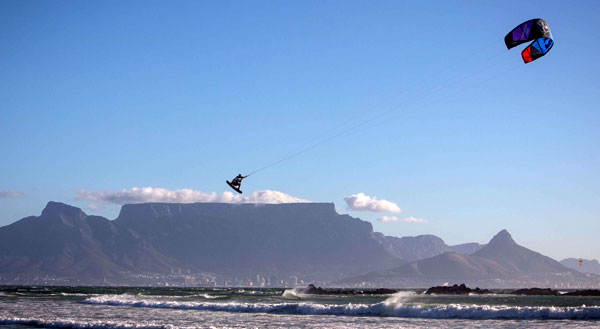
The thing that you should remember if you take nothing else away from this article and the one piece of advise that every single pro rider I have EVER talked to has given me as their number 1 tip for going truly aerial is this:
…forget about the kite, to go BIG, you have to really stack that edge with power, get as much tension as you can in the lines and let that tension tear you from the water, preferably with perfect timing using a wave as a ramp, for really gasp inspiring airs.
The major mistake most people make is that they try and use the kite to gain height, the kite is the means of propulsion and provides all the energy for everything we do on the water. For that reason most people believe that just by sending it harder, faster and slicker it will provide all the lift needed to send them to the stars.
Most People Are Always Wrong…
Using just the kite you will be able to generate some small airs, you’ll get a little whimper of a jump, a flaccid little fellow. Your ability to pull off this pathetic attempt will be highly dependent on the conditions (and often a fair amount of good fortune) and you’ll often travel a long way down wind as you’re trying it, resulting in a flat but albeit long jump.
In short your jumps will be rubbish, 90% of the time.
The problem that arises is that whilst the kite can indeed generate HUGE amounts of power, if that power is not controlled, it is down to blind luck if we get the result we are after.
Now don’t get me wrong you do really need to use the kite to get airborne, but that part is relatively simple and if you’re clearing even a couple of feet in your jumps, you’ve likely mastered the kite to a point where you are getting as much height out of it as your going to.
You need to master the board.
So the drill is as follows, as you’re preparing for the jump, start to edge the board hard, keeping the kite fairly low. The lower you have the kite to start with, the more power you’ll be able to generate, as the more speed you’ll be able to clock up as you sweep it upward.
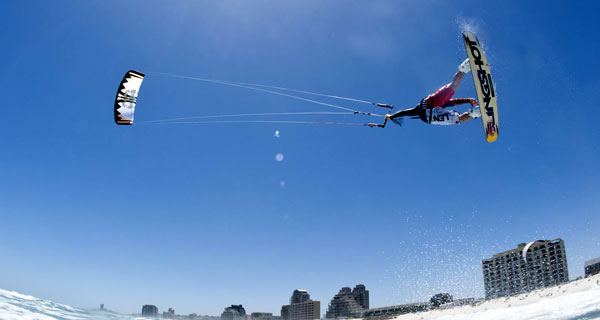
Now sweep the kite up to to 12 o’clock.
This is where things start to go wrong.
The faster and more aggressively you sweep the kite upwards towards 12 o’clock, the more power you’re going to generate. However, the more power you have, the harder it’s going be to hold down your edge and the more likely you are to be pulled off the edge and ripped downwind towards the kite. As the kite moves higher in the window and the angle of pull on your harness becomes that much greater, this effect is multiplied, as you are naturally pulled up onto you toes by the rising kite and your weight slips off the edge.
As you get pulled off the edge you inevitably start to drift (often the sensation is more akin to being ripped rather than drifting!) downwind towards the kite, this has 2 effects:
It reduces the apparent wind in the kite, releasing that all important tension in the lines and makes controlling your speed impossible…not what you want for trips to the moon.
That downwind motion will now be transferred into your jump. Every bit of energy you expend in moving downwind at this point is energy that now cannot be used for upwards propulsion (engineers and scientists feel free to wade in here, something to do with vectors of motion if I’m not mistaken?)

Add a little chop into the mix and you’ve now got real problems. Chop will make it even harder to hold down your edge. Every bump you hit will shift your center of gravity, the motion this generates will likely force you to throw your weight up and forwards to compensate, again disengaging the edge with the same results as above, with the added complication that now you’re off balance as well.
This leads us to the inherent contradiction in going BIG. You need to generate a HUGE amount of power through the kite, by moving it fast and hard from low in the window to 12 o’clock…BUT as soon as you lose control of that power, by letting it pull you off your edge, your jump’s going to suffer.
So you need to balance one against the other, the more power you can hold down through the edge and the faster you can pilot the board and kite, under control, consistently, the higher you’re going to go.
So what to do…how do we achieve this?
Well like most things in life I can show you the door but you need to walk through it. The key is holding the edge down and really stacking it up with power…how much you need to do this will depend on your skill levels, your strength and the amount of chop you’re dealing with on the day.
Get out there and play with it, see what works, for sure within a few attempts of trying this you’ll be going MUCH higher than you’ve been going before.
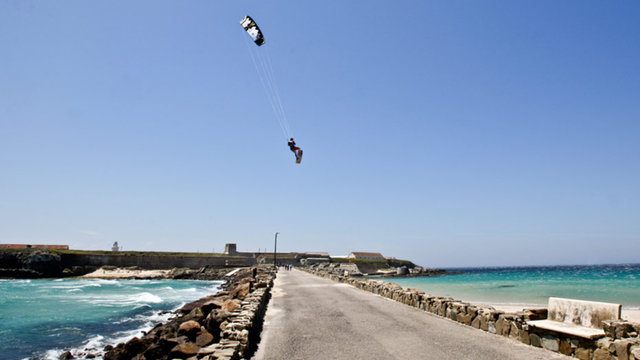
Rip It Up
Wait for the feeling of being ripped off the water, if you’re not getting that feeling then your trying to jump too early, not edging hard enough or not flying the kite hard enough (or you’re underpowered).
This is something it took me ages to understand…and it really is the crucial piece of feedback telling you you’ve got this right. Once you feel it you‘ll get hooked on it…it’s an amazing feeling of harnessed power. If you’re not sure if you’ve experienced it…you haven’t…when you get it you’ll know.
The Bar
As an exercise try to keep the bar all the way in while edging. This is an exercise in playing with the edge, somedays it will be possible, others not, but have a go and see what you find (this is much easier on flat water as your not being knocked off balance by the bumps). This isn’t something you’ll want to do all the time when your jumping but is great for getting an understanding of the principles we’re talking about here.
Use the Waves
If you can time your jumps off little ramps you can really go aerial. This is NOT cheating and is a trick the pro’s use all the time. That chick, dude (or judge), you’re trying to impress on the beach is hardly likely to come up to you afterwards and say “nice jump and I would have really gone for you BUT I saw you used a wave to launch…too bad,”..well let’s face it they’re hardly likely to come up to you anyway (especially if you’re wearing board shorts over you wetsuit!) but you know what I mean…height is what counts…not how you get there!
Riding S’s
Simply practice transferring the weight from your toes to your heels (remember here your weight will follow your head…so always lead with your head…ie look where you want to go and let your body follow) As you get more comfortable and can do it while maintaining forward speed, start to make the turns more aggressive. For an idea of the kind of power you can harness through this, have a look at the top wave riders cranking out top and bottom turns…this is what we want you looking like!
Pop
I’m talking about board generated pop. Have the kite nicely powered at about 11/1 o clock, and turn slightly downwind to gather some speed, now crank hard on to your heel side, feel the tension stack in the lines and before you slow down, release the edge (by shifting your weight to you toes) and sheet in. What you’re looking for is a small drift, just a foot or so to start with, (upwards and downwind). As you get more comfortable with this, get more aggressive and start timing it off small waves to increase the height and improve your skill with timing. Then you can slowly start tweaking the kite as you hit the kicker to really start to get some hang time.
Fins
A really fun way to see the amount power the board can hold is to experiment with different sized fins. This really demonstrates how much pressure you can apply through the turn and what difference this makes to your jumps.
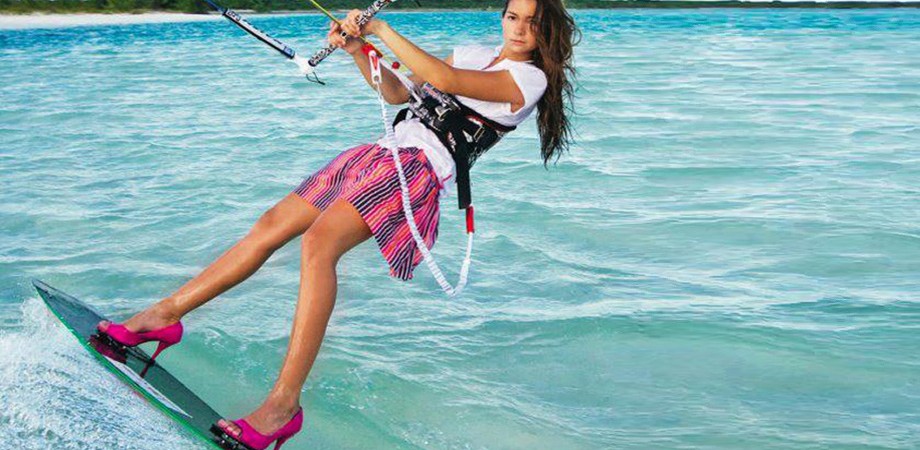
Riding upwind is in many ways the Holy Grail of kitesurfing. The ability to leave the beach and come back at the same point, avoiding the Walk of Shame in the process is what marks out those who can sit in the pub and proudly announce to potential romantic interests, “I kitesurf,” from those who are still learning and sit there quietly for fear of being found out the next day at the beach if they speak up.
It is in many ways a very natural process.
As you become comfortable with your first rides and start extending the distance you are riding you will naturally start to transfer your weight to your back foot. This is a natural process as you’ll naturally want to engage the edge to give the board some more stability and, once achieved, it is a much more comfortable riding position.
The big problem here is that as you still don’t quite have the balance/counter balance of the kite worked out you will often transfer too much weight on to the back foot, which engages the heel side edge too much, causing the board to screw upwind, braking it and leaving you sinking.
Or you don’t engage the edge enough or engage it at the wrong angle and end up skidding off down wind totally out of control until an amused Neptune takes you out of you misery and provides a nice wave for you to trip over and come crashing down in a splash.
Embrace the suck and learn to love it, this is an essential part of learning to ride upwind.
As you start to learn how much power is coming through the kite you will start to transfer that power through your back heel into the board in a controlled manner and that will start to turn the board upwind avoiding the pitfalls mentioned above.
Aside from just letting nature take its course there are (of course) some things we can do to help the process along the way.

The first one is to…
To start with your attention will be focused entirely on the kite, that’s natural. As soon as you feel you are able, start to transfer your attention and your eyes away from the kite and look upwind at the point you want to arrive at. As soon as you can do this with any sort of consistency you’ll start to notice results.
By looking at your destination you start to open up your shoulders and hips, transferring your weight correctly automatically, much like on a snowboard.
Try it now, stand up now with your legs spread shoulder width apart, shoulders facing forward. Now turn your head 90 degrees to the right and let your shoulders follow, notice where the weight is transferred to.
If you’ve done it correctly and opened up your shoulders and hips you should notice that your left heel is now much more firmly planted on the ground and the weight has transferred from your right foot into this left heel.
This is exactly the effect we are looking for in our kitesurfing. To transfer enough weight onto that back heel thereby engaging the edge and starting to drive ourselves up wind.
The key to this is to think in terms of what your shoulders (and hips) are doing and not what your feet are doing. i.e. don’t try and drive more weight through your heel, let your stance do the work for you.
For many people as soon as they are riding the first thing they do is pull the bar all the way in for security…it feels good to have some thing to hold on to tight! By doing this you are effectively choking the kite. It won’t want to return to 12 o’clock and even if it feels like it’s riding ok (in stronger winds for example) it will be sitting very far back in the window which means it will be pulling you off down wind.
Let the bar out and the kite will steer easier, but more importantly it will fly forwards in the window thus reducing the angle between your intended direction of travel and the pull from the kite. Thus making it easier to ride upwind (for more on this see the section below on Go SLOW).
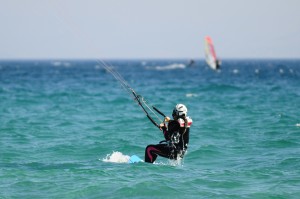
The other thing we need to start thinking about at this stage is pushing forward with the hips.
This is where you may want to start considering riding in a waist harness.
Seat harnesses are great while you are learning as they keep the spreader bar down and well away from your rib cage and give you plenty of de power on the kite which is exactly what we want as beginners.
As we start to ride however, seat harnesses allow you to sit down to attempt to control the power of the kite by adopting the classic “Shitting Position,” this is counter-productive at this point.
What we want is for you to push your hips forward and throw your head backwards off the back of the board in a shagging position. With a waist harness if you drop into the shitting position the harness will rise up under your armpits and be very uncomfortable and more importantly look very uncool (Wonder Bra effect anyone?).
For that reason a waist harness provides a great yardstick by which to regulate your riding style. If you feel it rise up round your armpits you know you’re doing it wrong. You should be pushing your hips forward to the point where the kite is almost pulling the waist harness down when it’s flown at 45 degrees.
Riding up wind is only attained by riding slowly.
Why?
You need the kite to be as far far forward in the wind window as possible so that the kites direction of pull and your direction of travel are as close as possible. If you are screaming along at 1000 miles an hour the kites angle of pull compared to your direction of travel will be much more obtuse and you are almost certainly going downwind. Look where you’re going, engage your heel edge and the kite will shoot forward in the window, you will slow down and start to ride up wind.
Don’t understand the physics of this? Recap this lesson.
If you think about removing your front hand from the bar and trailing it in the water behind you as you ride you’ll find that from this position it’s almost impossible to ride in any direction but up wind. Your hips will be fully thrust forward your body leaning right back against the pull of the kite, your heel edge will, be engaged fully and you will shoot upwind.
Even if at the moment this actual position is unattainable – start to visualise the position in your head as you ride and get as close to it as possible to get a feel for what we’re talking about.
Start getting your strut ready for the “Walk of Fame.”